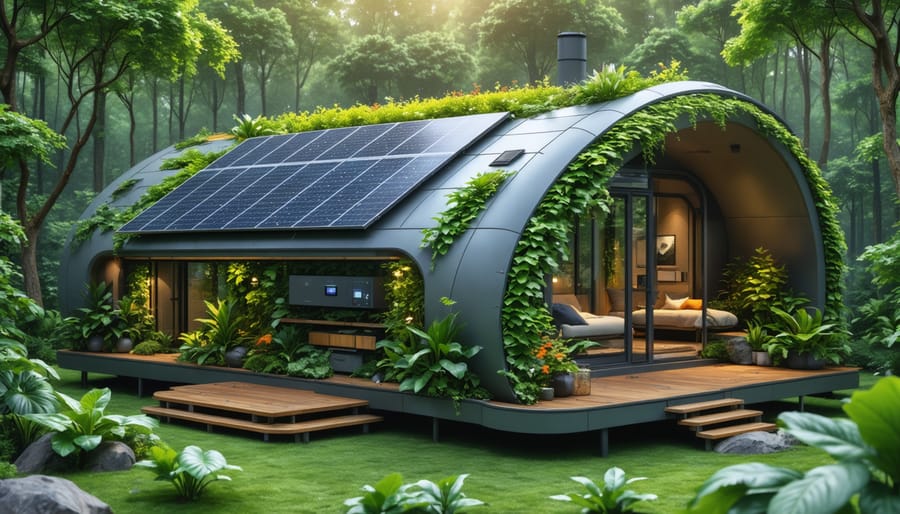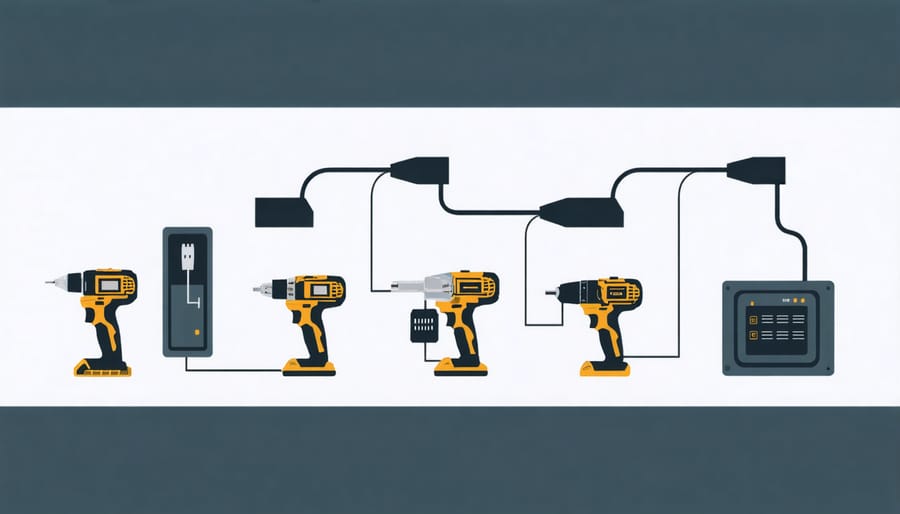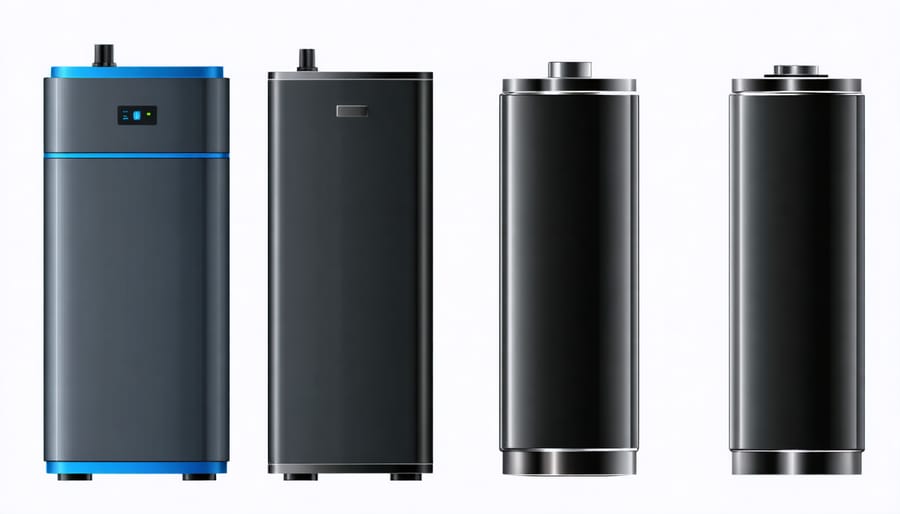Power Your DIY Shed: Smart Energy Storage Solutions That Actually Work

Transform your renewable energy storage capabilities with advanced battery systems, smart controllers, and integrated solar solutions that power your eco-friendly shed solutions year-round. Modern storage technologies have revolutionized how homeowners harness and maintain sustainable power, making off-grid living more accessible than ever. Whether you’re powering tools, lighting, or climate control systems, today’s storage options combine reliability with environmental responsibility. From compact lithium-ion batteries that maximize space efficiency to innovative thermal storage systems that regulate temperature, the latest advancements offer practical solutions for every budget and need. These systems not only reduce dependence on traditional power grids but also provide crucial backup during outages, ensuring your shed remains functional regardless of external conditions.
Why Your Shed Needs Energy Storage
Common Power Needs for Modern Sheds
Modern sheds have evolved beyond simple storage spaces, with many now serving as high-tech shed workspace environments requiring reliable power. Typical electrical needs include LED lighting systems (50-150 watts), power tools (500-2000 watts), and small appliances like heaters or fans (1000-1500 watts). For basic workshop activities, most shed owners need around 2000-3000 watts of available power. Security systems and Wi-Fi extenders add minimal power requirements but are increasingly common additions. Consider your specific tool requirements and usage patterns when planning your power setup – occasional use of high-draw tools like table saws will need different solutions than constant low-power needs like LED lighting and device charging.

Cost Savings Over Time
While the initial investment in renewable energy storage solutions may seem substantial, the long-term savings are impressive. Most homeowners see a return on investment within 5-7 years through reduced utility bills. A typical solar storage system can save between $1,200 and $1,500 annually on electricity costs, depending on local energy rates and usage patterns.
Battery systems, when paired with solar panels, can cut peak-hour energy costs by up to 40%. By storing excess energy during sunny periods and using it during expensive peak hours or cloudy days, homeowners can maximize their savings. Additionally, many states offer tax incentives and rebates that can reduce the initial setup costs by 20-30%.
Maintenance costs are minimal, with most modern storage systems requiring only basic annual checkups. With a lifespan of 10-15 years, these systems provide consistent savings while protecting against rising energy costs.

Battery Storage Options for Your Shed
Deep Cycle Lead-Acid Batteries
Deep cycle lead-acid batteries remain a trusted and budget-friendly choice for renewable energy storage. These workhorses of the storage world have been powering off-grid systems for decades, offering reliable performance at a fraction of the cost of newer technologies. A typical 12-volt deep cycle battery can last 5-10 years with proper care and maintenance.
Many homeowners appreciate these batteries for their simplicity and widespread availability. “I’ve been using deep cycle batteries in my shed’s solar setup for six years now,” shares Tom, a DIY enthusiast from Colorado. “They’re straightforward to maintain and haven’t let me down.”
While they require regular maintenance, including checking water levels and keeping terminals clean, the effort pays off in dependability. They work best when kept in a ventilated space and charged properly. For those on a budget who don’t mind some hands-on maintenance, deep cycle lead-acid batteries offer a practical entry point into renewable energy storage.
Lithium-Ion Systems
Lithium-ion battery systems have revolutionized renewable energy storage for home use, offering an excellent balance of performance and practicality. These modern powerhouses pack more energy into a smaller space than traditional batteries, making them perfect for compact shed installations. A typical 5kWh lithium-ion system can easily power your shed’s essential tools, lighting, and small appliances while maintaining a sleek, unobtrusive presence.
What makes these systems particularly appealing is their impressive 10-15 year lifespan and minimal maintenance requirements. Unlike older battery types, lithium-ion batteries don’t need regular watering or careful monitoring. They’re also incredibly efficient, converting about 95% of stored energy into usable power, which means lower energy waste and reduced costs over time.
Many homeowners appreciate that lithium-ion systems can be easily expanded as their energy needs grow. Starting with a basic setup for lighting and tool charging, you can gradually add capacity to support more demanding applications like power tools or a mini-workshop. The systems also include smart monitoring features, allowing you to track energy usage through your smartphone and optimize your power consumption patterns.
Budget-Friendly Alternatives
While high-end battery systems can be expensive, several budget-friendly alternatives can help you store renewable energy effectively. Used electric vehicle batteries, which retain 70-80% of their capacity, offer a cost-effective solution when properly reconditioned. These “second-life” batteries typically cost 40-60% less than new ones while providing reliable performance.
Another affordable option is lead-acid batteries, which have been trusted for decades in off-grid systems. Though they require more maintenance and have a shorter lifespan than lithium batteries, their lower upfront cost makes them attractive for beginners. Deep-cycle marine batteries are particularly suitable for small-scale storage needs.
DIY powerwall systems, built using recovered laptop or power tool batteries, can be an economical choice for hands-on enthusiasts. While these require technical knowledge and careful safety considerations, they can reduce storage costs by up to 70% compared to commercial solutions. Just remember to source components from reputable suppliers and follow proper safety protocols.
Setting Up Your Storage System
Basic Components You’ll Need
To create an effective renewable energy storage system, you’ll need several key components working together. The heart of your system is the battery bank, typically consisting of deep-cycle batteries designed specifically for renewable energy storage. These batteries come in different types, with lithium-ion and sealed lead-acid being the most popular choices for home installations.
You’ll also need a charge controller to regulate the power flow from your energy source (like solar panels or wind turbines) to your batteries. This essential device prevents overcharging and extends battery life. An inverter is another crucial component, converting stored DC power into AC power that your household appliances can use.
For monitoring and maintenance, invest in a battery monitor system that displays charge levels and system performance. Don’t forget safety equipment like circuit breakers, proper cables, and connectors rated for your system’s voltage. A weatherproof enclosure is vital to protect your components from the elements, especially if installed outdoors.
Remember to include proper ventilation in your setup, as some battery types require adequate airflow. Basic tools for installation and maintenance should also be part of your equipment list.
Installation Best Practices
Safety should always be your top priority when installing renewable energy storage systems. Start by choosing a well-ventilated, dry location away from direct sunlight and extreme temperatures. For battery systems, ensure the installation area is clean, level, and can support the weight of your chosen solution.
Always wear appropriate protective gear, including safety glasses and gloves, during installation. If working with lead-acid batteries, keep baking soda and water nearby to neutralize any accidental acid spills. For lithium-ion systems, maintain proper clearance around the unit for adequate airflow and easy maintenance access.
When connecting components, double-check all wiring connections and ensure proper polarity. Install appropriate circuit breakers and fuses as recommended by the manufacturer. Consider installing smoke detectors and fire suppression systems nearby as an extra safety measure.
For optimal performance, mount battery banks off the ground using appropriate racks or platforms. This prevents moisture damage and allows for easier maintenance. Label all components clearly and keep a detailed diagram of your system’s layout for future reference. If you’re unsure about any aspect of the installation, don’t hesitate to consult a qualified professional.

Maintenance Tips
Regular maintenance is key to extending the life of your renewable energy storage system. Start by inspecting your batteries monthly, checking for signs of corrosion, loose connections, or unusual swelling. Clean battery terminals with a mixture of baking soda and water, ensuring all connections remain tight and corrosion-free.
For solar-connected systems, keep your panels clean from debris and dust, particularly during dry seasons. A simple rinse with water and a soft brush every few months will maintain optimal efficiency. Monitor your charge controller’s display regularly to ensure proper charging cycles and system performance.
If you notice reduced storage capacity or unusual discharge patterns, first check your usage habits and weather conditions before assuming equipment failure. Common issues like decreased performance during winter months are normal and can be managed through adjusted usage patterns.
Keep a maintenance log to track system performance and any irregularities. This documentation proves invaluable for troubleshooting and helps identify seasonal patterns in your energy storage needs. For battery-based systems, maintain proper ventilation and temperature control in your storage area to prevent premature degradation.
Future-Proofing Your System
When planning your renewable energy storage system, thinking ahead is crucial for long-term success. Start by choosing a system that can grow with your needs. Many modern battery storage solutions are modular, allowing you to add more capacity as your energy requirements increase. This flexibility means you won’t need to replace your entire system when you want to expand.
Consider leaving extra space in your installation area for future additions, and ensure your wiring and mounting solutions can accommodate growth. It’s also worth investing in smart monitoring systems that can help you track performance and identify when upgrades might be needed. These smart shed upgrades can make a significant difference in managing your energy storage efficiently.
Look for systems with universal compatibility features. This ensures you can integrate new technologies as they become available, whether that’s newer battery types or advanced solar panels. Many current storage solutions offer firmware updates, keeping your system current with the latest energy management features.
Don’t forget about physical protection – install your system in a way that makes future maintenance and component replacement straightforward. Consider using removable panels or creating easy access points. This forward-thinking approach will save you time and money down the line while ensuring your renewable energy system remains effective for years to come.
Embracing renewable energy storage solutions is more than just a trend – it’s a smart investment in your home’s future. From compact battery systems to innovative thermal storage options, there’s a solution to match every homeowner’s needs and budget. By implementing these storage systems, you’re not only reducing your carbon footprint but also securing reliable power for your outdoor spaces while potentially lowering your energy bills.
Remember, the key to success lies in choosing the right solution for your specific requirements and ensuring proper installation and maintenance. Whether you’re starting small with a basic battery setup or going all-in with a comprehensive solar storage system, taking action today will bring you one step closer to energy independence. Start by assessing your power needs, consulting with local professionals, and creating a plan that works for your space. The future of sustainable energy storage is here – it’s time to make it part of your home.

